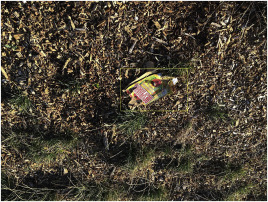The article examines a number of ways in which the use of artificial intelligence technologies to predict the performance of individuals and to reach decisions concerning the entitlement of individuals to positive decisions impacts individuals and society. It analyses the effects using a social justice lens. Particular attention is paid to the experiences of individuals who have historically experienced disadvantage and discrimination.
Objective: Many studies evaluated how the Magnetic Resonance Imaging (MRI) field strength affects the effectiveness to detect neurodegenerative changes of Alzheimer's disease (AD), derived from atrophy or thickness. To the best of our knowledge, no study evaluated before how tissue texture changes are affected. In this research, hippocampus texture features extracted from 1.5 T and 3 T MRI are evaluated how are affected by the magnetic field strength.
Urbanisation involves major changes in environmental conditions such as light, temperature, humidity and noise levels, but the effect of urbanisation on soil conditions and soil biodiversity has received less attention. The reported effects on species richness across a rural to urban landscapes are not unequivocal. Positive, negative and neutral effects have been found, but what is causing this ambiguity in the relationship between species richness and urbanisation is poorly understood.
This review goal is to reflect on the challenges and prospects for water quality in the face of the pandemic caused by the new SARS-CoV-2 coronavirus (COVID-19). Based on the information available so far, the detection of SARS-CoV-2 RNA in wastewater has raised interest in using it as an early warning method, to detect the resurgence of infections and to report the risk associated with contracting SARS-CoV-2 in contact with untreated water or inadequately treated wastewater is discharged.
Water pollution is one of the serious threats in the society. More than 8 million tons of plastic are dumped in the oceans each year. In addition to that beaches are littered by tourists and residents all around the world. It is no secret that the aquatic life ecosystem is at a risk and soon the ratio of plastic/waste to the marine life particulary fish will be 1:1. Hence, in this paper, we have proposed a dataset known as AquaTrash which is based on TACO data set.
Purpose: Poor nutrition is highly implicated in the pathogenesis of cancer and affects the survival of patients during and after completion of definitive therapies. Mechanistic evidence accumulated over the last century now firmly places dysregulated cellular energetics within the emerging hallmarks of cancer. Nutritional intervention studies often aim to either enhance treatment effect or treat nutritional deficiencies that portend poor prognoses.
Solar light-driven water splitting provides a promising way to store and use abundant solar energy in the form of gaseous hydrogen which is the cleanest chemical fuel for mankind; therefore this field has been attracting increasing attention over the past decades.
CeO2 shows unique catalytic properties by an acid–base bifunctionality as well as redox properties. The acid–base bifunctional properties of CeO2 have been applied to the non-reductive CO2 conversion with alcohols such as dimethyl carbonate (DMC) synthesis from CO2 and methanol. CeO2 shows very high selectivity to DMC; however, the yield of DMC is strongly limited by the equilibrium. The combination of the synthesis of organic carbonates from CO2 and corresponding alcohols with suitable H2O removal methods can enhance the yield of the organic carbonates beyond the equilibrium limitation.
Manufacturing challenges are anticipated to become worse in the coming decades owing to global material and energy constraints combined with environmental issues associated with conventional processes. Addressing these difficulties calls for a significant amount of research to be conducted to establish robust new technologies that are cost-effective and energy efficient, while at the same time minimizing environmental pollution.
Alzheimer's disease (AD) is associated with cognitive deficits and behavioral disorders such as anxiety and depression. Recent clinical and experimental studies have demonstrated that swimming exercise could be a potential therapy for cognitive and behavioral disorders. The prevalence of anxiety and depression is increasing among patients with AD; hence, further studies are needed to develop therapies for these behavioral abnormalities.

